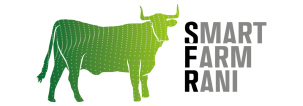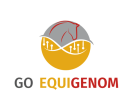Operational Group: Innovative diagnostic methods for anaplasmosis in ruminants and control measures for the detection of icteric carcasses in slaughterhouses
- Type Operational group
- Status In progress
- Execution 2024 -2027
- Assigned Budget 150.000,00 €
- Scope Autonómico
- Autonomous community Aragón
The expected results of this project are aimed at, once foci of pathologies that cause jaundice, such as Anaplasma, the pathogen addressed as a priority in this project, are detected, applying treatments that are currently known to work, thereby avoiding future seizures due to jaundice, thanks to the use of innovative diagnostic tests proposed in this project.
These diagnostic techniques could even be applied before any slaughter to prevent the emergence of an outbreak, applying them in geographical areas where, due to the livestock farming system (greater risk in extensive livestock farming) as well as the climatic conditions of the area, the presence of the vectors that transmit anaplasmosis is known.
The expected outcome of this project is the early detection of pathological processes in ruminants that, while presenting clinical symptoms so mild they go unnoticed, subsequently result in jaundiced carcasses after slaughter, leading to carcass confiscation and, consequently, significant economic losses.
It is also important to consider the risk to human health that some types of Anaplasma can affect not only livestock but also humans (Anaplasma phagocytophilum). This is why it is considered a zoonosis that may be underdiagnosed due to the lack of specificity of its clinical presentation and a lack of awareness among medical professionals. Anaplasmosis, along with ehrlichiosis and other diseases caused by intracellular agents, are considered emerging zoonoses.
Regarding the dissemination plan, the following activities are planned:
- Field visits: These will primarily take place at feedlots, since this is where the innovative diagnostic tests will initially be implemented. A minimum of 30 days is planned.
- Informational talks and technical sessions: Informational and technical talks are planned for livestock farmers, meat companies, clinical veterinarians in the ruminant sector, and official veterinary services; with an estimated attendance of 15 to 20 people. The talks will initially be held at the end of the second, third, and fourth years of the project.
- Brochures/presentations on this pathological process: the content would be determined based on the needs of the project.
- Media outreach: sector-specific radio and television programs (Aragón TV's "Tempero" program, Aragón Radio's "De Puertas Al Campo" program, publications in the newspaper "Heraldo del Campo," etc.). These actions will be carried out throughout the project and will be carried out specifically when results worth disseminating are obtained. Therefore, a timeline for these actions cannot be established at this time.
- Scientific publications: publications related to the work carried out in this project (to be determined based on the results obtained as the project progresses and their potential scope. They could be published, for example, in the journals "Tierras" and "Ganadería"). Dissemination through the websites of the entities involved in this project.
To advance better diagnosis, understanding, and treatment of diseases with significant incidence in Aragonese livestock or those considered zoonotic, due to their impact on public health.
The expected results of this project are aimed at, once foci of pathologies that cause jaundice, such as Anaplasma, the pathogen addressed as a priority in this project, are detected, applying treatments that are currently known to work, thereby avoiding future seizures due to jaundice, thanks to the use of innovative diagnostic tests proposed in this project.
These diagnostic techniques could even be applied before any slaughter to prevent the emergence of an outbreak, applying them in geographical areas where, due to the livestock farming system (greater risk in extensive livestock farming) as well as the climatic conditions of the area, the presence of the vectors that transmit anaplasmosis is known.
- Coordinator/entity name: Regulatory Council of the PGI Ternasco de Aragón
- Postal address: Ctra. Cogullada s/n, Mercazaragoza Edif. Centrorigen
- Coordinator/entity email: javi@ternascodearagon.es
- Telephone: 976470813
- Consejo Regulador de la IGP Ternasco de Aragón
- La Asociación de productores de carne de vacuno de Aragón (vacunodearagon@hotmail.com)
- Consejo Regulador de la IGP Ternasco de Aragón







